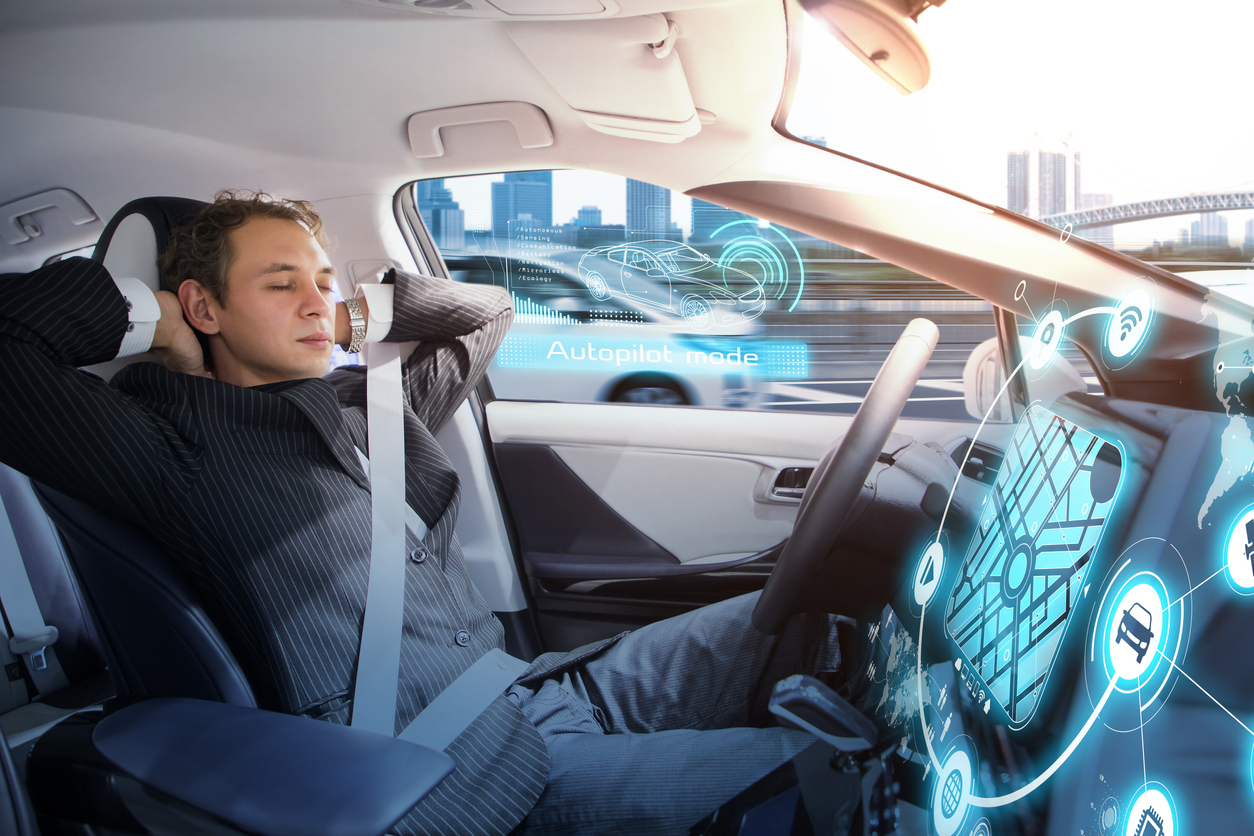 With the rapid advancements in self-driving technology, autonomous vehicles are becoming an increasingly common sight on roads around the world. The integration of this technology has raised many questions, particularly concerning liability in accidents involving autonomous vehicles. As the use of self-driving cars becomes more prevalent in the UK, it is crucial to explore the potential implications and legal considerations surrounding these incidents. The issue of liability becomes more complex when human error is taken out of the equation, leading to a shift in responsibility from drivers to manufacturers and developers. To fully understand the legal landscape and prepare for the future, it is essential to delve deeper into the challenges and potential solutions that arise with the integration of self-driving technology.
With the rapid advancements in self-driving technology, autonomous vehicles are becoming an increasingly common sight on roads around the world. The integration of this technology has raised many questions, particularly concerning liability in accidents involving autonomous vehicles. As the use of self-driving cars becomes more prevalent in the UK, it is crucial to explore the potential implications and legal considerations surrounding these incidents. The issue of liability becomes more complex when human error is taken out of the equation, leading to a shift in responsibility from drivers to manufacturers and developers. To fully understand the legal landscape and prepare for the future, it is essential to delve deeper into the challenges and potential solutions that arise with the integration of self-driving technology.
Self-driving technology, also known as autonomous driving, has revolutionized the automotive industry in recent years. This groundbreaking technology has the potential to transform the way we commute, making our roads safer and more efficient. At its core, self-driving technology refers to vehicles that can operate without human intervention, relying on sensors, cameras, and artificial intelligence to navigate their surroundings.
Self-driving technology is categorized into different levels of automation, ranging from Level 1 to Level 5. Level 1 automation, also known as driver assistance, includes features like adaptive cruise control and lane-keeping assist, which can assist the driver but still require their full attention. Level 2 automation, on the other hand, offers partial automation with features such as advanced cruise control and lane centering, where the vehicle can control acceleration, braking, and steering under specific conditions.
Moving up the automation ladder, Level 3 automation includes conditional automation. This means that the vehicle can take full control under certain circumstances, but the driver needs to be ready to intervene when necessary. Level 4 automation, known as high automation, allows the vehicle to handle most driving tasks without human involvement, but it may still require a human driver in some situations. Finally, Level 5 automation represents full automation, where the vehicle is capable of performing all driving tasks without any human intervention.
In the UK, self-driving technology has been at the forefront of innovation. The government has been actively supporting the development and testing of autonomous vehicles on public roads. Several cities, including London, have become testbeds for self-driving technology, allowing companies to showcase their vehicles and gather valuable data.
Self-driving vehicles come with a range of key features and capabilities that set them apart from traditional vehicles. One of the most significant advantages is their ability to enhance road safety. With advanced sensors and constant monitoring of the environment, self-driving vehicles can react faster and more accurately to potential hazards, reducing the risk of accidents caused by human error.
Moreover, self-driving technology has the potential to revolutionize the transportation industry. With the ability to optimize routes, reduce congestion, and improve fuel efficiency, self-driving vehicles can have a significant impact on traffic management and infrastructure planning. Additionally, these vehicles offer the possibility of providing accessible transportation options for individuals who are unable to drive, such as the elderly or people with disabilities.
In conclusion, self-driving technology is rapidly advancing, bringing us closer to a future where vehicles can operate without human intervention. With different levels of automation and ongoing development in the UK, self-driving vehicles are equipped with remarkable features and capabilities that can enhance road safety and transform the transportation industry. As this technology continues to evolve, it is crucial to ensure robust regulation and infrastructure to fully harness its potential for the benefit of society.
The current liability framework in the UK plays a crucial role in determining fault in road accidents involving human drivers. This legal framework revolves around the concept of negligence, which is applied to assess whether a driver acted reasonably or breached their duty of care. By understanding the general principles and factors considered in assigning liability, we can gain a better insight into how the legal system operates in such cases.
Negligence, in the context of road accidents, refers to the failure to exercise reasonable care while driving. It involves acts or omissions that fall below the standard of care expected from a reasonable person. When determining fault, the courts evaluate the driver’s conduct against this standard. If it is found that the driver failed to meet the expected standard of care, they may be held liable for the accident.
Several principles and factors are taken into account when assigning liability in road accidents. One of the key principles is the duty of care, which states that all drivers have a legal obligation to drive in a manner that does not harm others. This duty extends to other road users, such as pedestrians and cyclists. If a driver breaches this duty by acting negligently, and that breach results in an accident, they may be held responsible for the damages caused.
Another factor considered is causation. It must be established that the driver’s negligence directly caused the accident and subsequent harm. This can be a complex assessment, as multiple factors may contribute to an accident. However, if it is determined that the driver’s actions were a significant cause of the accident, they may be assigned a degree of liability for the damages.
Contributory negligence is yet another factor that comes into play. This concept recognizes that both parties involved in an accident may share some degree of fault. Even if one driver is primarily at fault, if the other driver’s actions contributed to the accident, their liability may be reduced accordingly. The courts assess the actions of all parties involved and apportion liability based on their respective contributions to the accident.
It is worth noting that the liability framework also considers specific circumstances, such as driving under the influence of alcohol or drugs. In such cases, the legal consequences can be more severe due to the heightened risk associated with impaired driving. Additionally, if a driver is found to have breached specific traffic laws or regulations, this can be used as evidence of negligence and a basis for assigning liability.
In conclusion, the existing liability framework in the UK for road accidents involving human drivers is centered around the concept of negligence. By evaluating the driver’s conduct against the standard of care, the courts determine fault and assign liability. Various principles and factors are considered, including the duty of care, causation, and contributory negligence. This framework promotes accountability and ensures that those responsible for accidents bear the appropriate consequences for their actions on the road.
Proposed changes for self-driving vehicles:
In recent years, the rapid advancements in technology have paved the way for self-driving vehicles to become a reality. With this groundbreaking development, there arises a need for revisiting the liability framework for accidents involving autonomous cars in the United Kingdom. To address this, legislative and regulatory initiatives have been proposed to update current laws and accommodate these autonomous vehicles seamlessly.
The proposed changes aim to establish a comprehensive framework that distributes liability in a fair and efficient manner. One of the key provisions is the clarification of responsibilities between human drivers and self-driving technology. When the vehicle is operating in autonomous mode, the liability would shift away from the human driver and towards the technology itself. This principle seeks to relieve human drivers of liability for any accidents that occur while their vehicles are in self-driving mode.
Furthermore, these changes would also introduce a new concept known as the “handover process.” This process refers to the transition of control from the autonomous system to the human driver. By clearly defining this handover process, the proposed changes aim to minimize confusion and potential accidents during the transfer of control. It is crucial to establish a clear line of demarcation for when the human driver is expected to take control and be fully responsible for the vehicle’s operations.
To effectively implement these proposed changes, legislative and regulatory initiatives are being developed to ensure a smooth transition into this new era of transportation. These initiatives will require collaboration between government bodies, technology companies, and legal experts to draft and implement laws that adequately address the liability concerns associated with autonomous vehicles.
The introduction of self-driving vehicles also raises questions about insurance coverage. As a result, the proposed changes include provisions that compel insurance providers to adapt their policies accordingly. Insurers will need to offer coverage that encompasses both conventional human-controlled driving as well as autonomous driving. This ensures that accidents involving self-driving vehicles are adequately covered, regardless of who is ultimately responsible.
In conclusion, the proposed changes to the liability framework for accidents involving self-driving vehicles in the UK are a necessary step towards accommodating this emerging technology in our society. By clarifying responsibilities, introducing the handover process, and adapting insurance policies, these changes aim to alleviate human drivers of liability when their vehicles are operating in autonomous mode. Through collaborative efforts, the legislative and regulatory initiatives will pave the way for a future where self-driving vehicles can coexist safely and seamlessly with human drivers on our roads.



